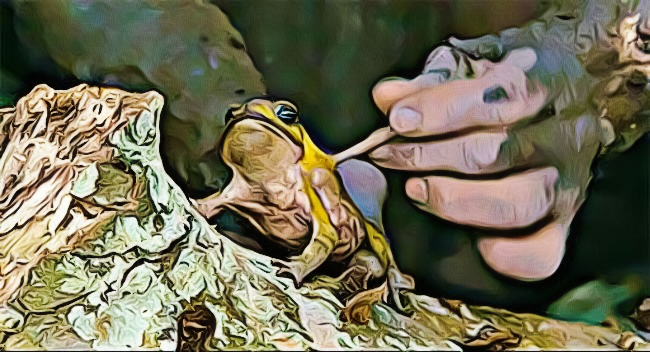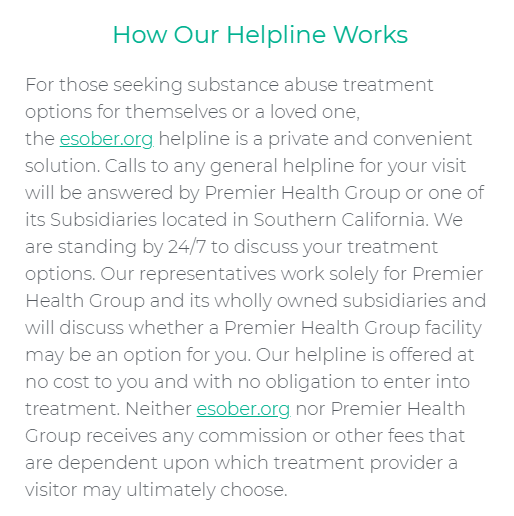People looking for a euphoric and hallucinogenic high don’t always target pharmacies for over-the-counter medication or fake prescription orders. Sometimes, they choose to look for organic alternatives, believing that these are cheaper and safer to consume. However, not everything that comes from nature is free of hazardous toxins.
People with substance abuse disorder are prone to depending on different volatile materials to maintain a certain high. They usually find this from prescription medication at high doses or illegal narcotics from shady suppliers. These two methods give them access to synthetic medicine to experience the high they’re craving.
Over time, people with this disorder tend to develop a greater tolerance for their current regiment. This usually leaves them with two potential options: to increase their dosage or mix in another drug. It’s not uncommon for people with substance abuse disorder to mix different drugs to overcome their body’s drug tolerance. One popular method of doing so is by using trendy drugs like toad venom.
Why are People Licking Toads?
The popularity of licking toad venom started in Mexico as a form of religious experience by attending shamanic ceremonies in the hopes of getting a hallucinogenic high. It’s a common myth that a 5-MeO-DMT trip can cure depression, anxiety, and other mental illnesses. However, the psychedelic contents of toad venom have yet to serve higher medical purposes.
The practice of licking toads has become commonplace in certain states, but it has spread to other areas in the US. This is because of the accessibility of purchasing toad venom fluid secretions in paste form. For this reason, people looking for a euphoric high extract it from a formulated paste form. Additionally, the psychedelic 5-MeO-DMT can also be synthesized in a lab.
Toad venom offers similar properties to similar hallucinogenic drugs like DMT, mescaline, and ayahuasca. In fact, 5-MeO-DMT contains over four times more potent than DMT products, making toad venom easily more dangerous than other psychedelic variants.
After ingesting the fluid or smoke in a few minutes, users are reported to feel the following:
- Intense emotional sensations
- Euphoria
- Out-of-body experiences
- Visual hallucinations
- Auditory hallucinations
The hallucinogenic trip delivers an almost instantaneous effect lasting just a few seconds. However, users report these effects lasting for hours due to a distorted sense of spatial and time awareness.
Like any drug, no positive effect is without risk of developing negative effects. Besides withdrawal symptoms, a person can just as easily have a “bad trip,” which delivers the opposite experience of the drug’s intended effect.
What Is Toad Venom?
Not all drugs come in pill, crystal, or powder form. In fact, “natural” alternatives, like ayahuasca, are blended from plants. Different marijuana strains are another common base material for hallucinogenic drugs. While these substances are derived from natural products, their potency as an addictive drug is still potent. In fact, some organic sources of psychedelic compounds are even more powerful than synthetic variants.
Toad venom is ingested by licking certain cane toad species. They come from venom glands that excrete psychedelic chemicals containing 5-MeO-DMT. Instead of ingesting them directly from a live toad, these fluids are extracted from toads and then dried into a paste. Afterward, these materials are sold illegally for users to smoke.
Smoking toad venom isn’t a lethal experience. It causes euphoric and hallucinogenic trips that last for about 30 minutes. Users typically report distortions with their sense of sight, smell, and sound, with a feeling of hyperawareness. After the trip is over, a person is left in a state of an altered mood and perception.
Where Does Toad Venom Come from?
Toad venom typically comes from the Colorado River toad. It’s a nocturnal amphibian that grows to just about seven inches in length, covered by dark leathery skin. This animal is found across Mexico and certain parts of Arizona, California, and Colorado.

As a semiaquatic toad, it’s naturally found among springs, canals, and ponds. However, it can also survive in the desert. Its diet consists of eating small mammals, amphibians, and insects, but its most notable attribute is its manner of self-defense.
The Colorado River toad uses toxic secretions to ward off more powerful predators like raccoons and birds. When ingested by these animals, the toxins can cause seizures, promote rapid heartbeats, and easily be lethal enough to kill. However, humans have a much higher tolerance of its toxins, making it possible to use these fluids recreationally as a hallucinogenic drug.
What Are the Dangers of Toad Venom?
After licking or smoking toad venom, can experience negative effects like:
- Nausea
- Vomiting
- Sweating
- Dry mouth
- Palpitations
Besides these physical sensations, people can also experience mental disturbances. This is because using hallucinogens disrupts communication between brain chemical systems and the spinal cord. Users of toad venom may feel:
- Panic
- Paranoia
- Dissociation
- Psychosis
These conditions are even more dangerous when toad venom is ingested in public settings. For example, people may put themselves at risk of endangering themselves or others, depending on handling a “bad trip.”
Similar to other addictive drugs like LSD and PCP, regular users of toad venom will notice their body’s increased tolerance to toxic compounds. This is why they’ll need higher doses of the drug to experience the same high, putting their body at risk of side effects and withdrawal symptoms even more.
How Does Toad Venom Affect the Environment?
Besides an addiction issue, it’s important to note that smoking toad venom isn’t just an addiction issue. While the complications of rehabilitating people with substance abuse disorder are one concern, the protection of Colorado River toads’ population is another.
Unlike marijuana and mushrooms which can be grown in labs, toad venom needs to be procured from live specimens. This is why suppliers of toad venom paste need to steal Colorado River toads and other venomous frogs illegally. This results in a mass relocation of species away from their natural habitats, causing negative implications to different ecosystems.
As an environmental issue, the illegal collection of Colorado River toads can compromise certain predator-prey balances in nature. Like any predator, Colorado River Toads quell different species of lesser animals. This includes a wide range of pests, from insects to smaller mammals.
Since these toads are collected for use in the illegal drug trade, ecosystems can spiral out of control, and the same issue can spread to nearby locations. Additionally, relocating Colorado River toads to processing plants can cause a threat to nearby animals. Since Colorado River toads secrete toxins as a natural defense mechanism against predators, curious animals like dogs and cats can poison and kill them by simply being nearby.
Conclusion
Developing a habit of taking in addictive substances for leisure can have long-term consequences to your body. While the high you feel may last for a short time, your body’s chemical configuration will be permanently altered. This can cause your brain’s hormones and receptors out of focus, causing abnormal changes in sensory perception, sexual behavior, and psychological problems, even when you’re sober.
Whether it’s toad venom or opioids, your body will need time and preparation to flush these harmful substances away. While it may be tempting to go through abstinence for recovery, there’s the risk of experiencing the rebound of withdrawal symptoms. For this reason, it’s necessary to get help from substance abuse professionals from credible rehab facilities.
Sources
https://www.newsweek.com/toad-venom-psychedelic-effects-mike-tyson-1650136
https://nypost.com/article/celebrities-who-smoked-toad-venom/




